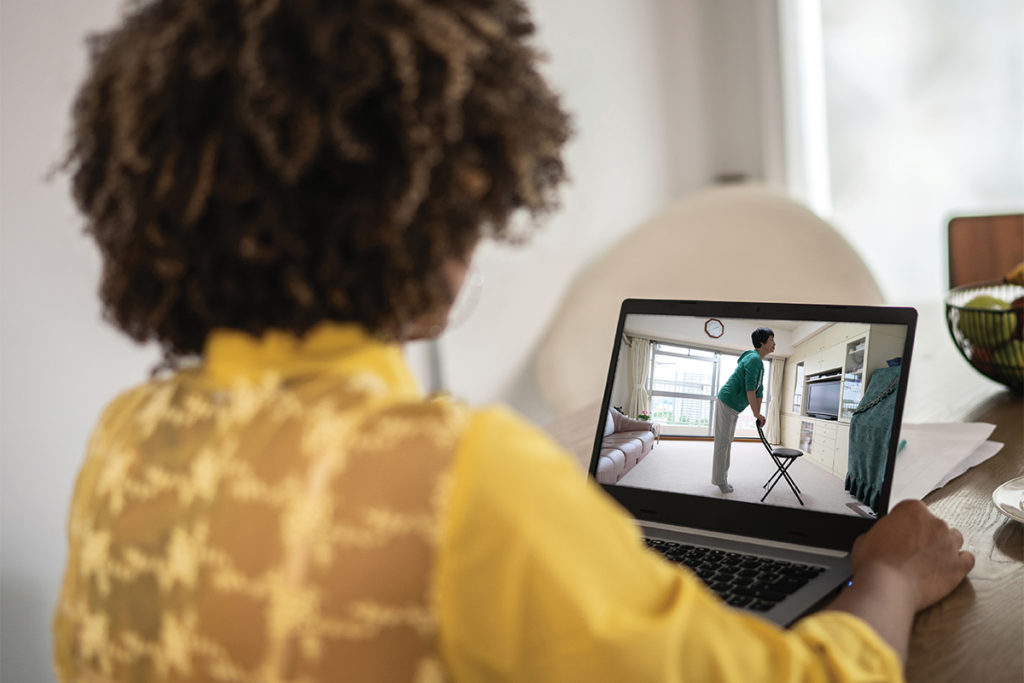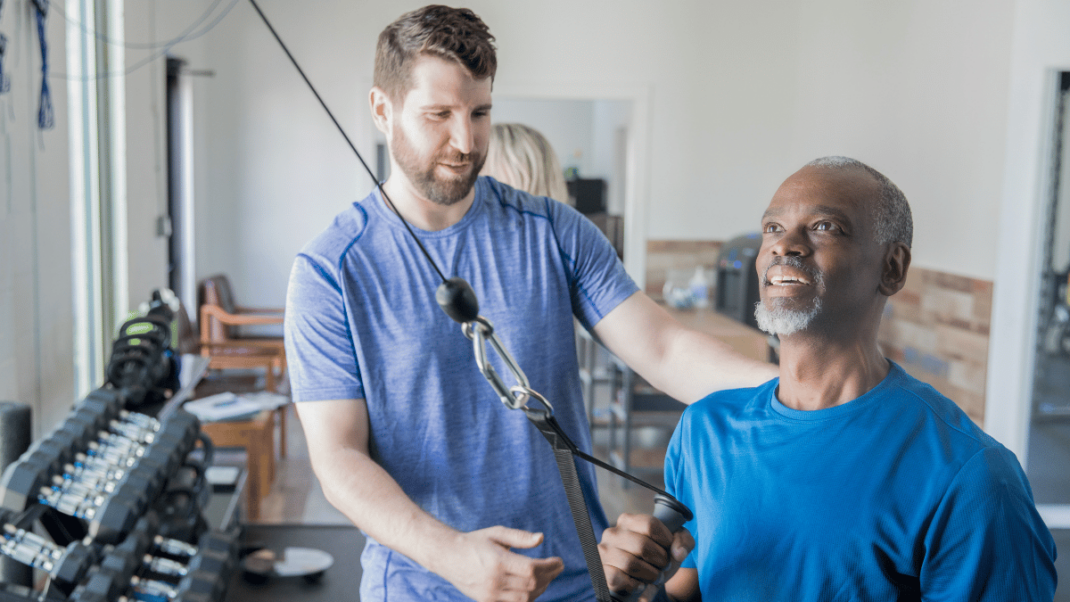All the Power Points to Webinars
How fitness professionals can take advantage of online presentations.
Fitness professionals often speak on topics related to exercise and wellness, whether at a seminar at the local health club or at an industry convention workshop. Sharing your expertise with others can both build your professional reputation and indirectly market your services to new audiences. But when the opportunities to present are limited in your community or when they conflict with your business schedule, it may be time to consider the digital alternative: webinars.
Webinars are similar to live seminars except that they are held online. Speakers can supplement their online presentations with videos, share handouts and worksheets, survey the “room” for feedback and engage in audience Q&A—all in real time. Using Web-based tools like digital polls, chatrooms, webcams or third-party phone conferencing services (e.g., Skype), fitness professionals can interact with a “virtual” audience just as they would with in-person participants.
If you haven’t yet considered conducting webinars, perhaps now is the time. More fitness organizations are including webinars as part of their continuing education line-up. For some good examples, take a look at Desert Southwest Fitness www.DSWfitness.com and the International Health, Racquet & Sportsclub Association (www.IHRSA.org). Organizations such as the National Wellness Institute (www.nationalwellness.org) and websites like www.StrengthandConditioningWebinars.com are also looking for qualified fitness and wellness presenters for their webinar series. Read on to discover how webinars compare with live seminars and what you should know about becoming an online presenter.
A Newly Improved Frontier
Webinars have been around since the late 1990s and have been used extensively in business and academia as a tool for marketing and teaching, respectively. In the past, facilitating a webinar took technological know-how, but today the available services handle the technology angle while giving fitness professionals the opportunity to present to audiences worldwide. Although webinars are not designed to replace the hands-on experience of live workshops, they offer several advantages that live sessions may not.
Greater Flexibility in Scheduling. There may be times when opportunities to give live presentations conflict with other commitments. Webinars can be scheduled at any time, any day, giving fitness professionals the flexibility needed to manage a busy schedule without going farther than a computer screen. However, it’s still important to consider the audience’s time and availability (i.e., avoid peak hours; be sensitive to different time zones, etc.).
Inexpensive Production. Webinars require less overhead than live events. All presentation materials are in digital format, from the slides to the supplementary handouts. There is no need to budget for travel/hotel accommodations or for shipping gear (which may be the case for conferences or out-of-town venues). And while there may be some usage fees from the hosting service, they certainly will not break the bank.
CEC Provider Opportunities. Offering continuing education credits (CECs) can increase both the value of the seminar and the number of attendees. Just because a presentation is offered over the Web does not make it CEC-ineligible. For instance, at the American Council on Exercise, the application process for webinars is the same as the process for “live” workshops.
Revenue Generator. Webinars are often presented free of charge to the public and used to generate new business. However, webinars that offer CECs or are presented by sought-after experts in the field have been successful at charging a fee. Also, webcasts (recorded, archived webinars) can turn an online session into a product, similar to a DVD of a missed session at a conference. (Note: If you are offering CECs with your webinar, a webcast may invalidate the terms of an agreement since the “live” component is missing.)
Webinars can also be an alternative for those who want to present but prefer not to speak in front of large audiences.
Tools of Engagement
Content should always be the main driver of any webinar, so strive to present relevant, research-based information. However, a truly successful webinar is defined by the level of real-time engagement that presenters have with their participants. Interaction can be as simple as presenting your slides and answering participant questions or as involved as having discussions and virtual breakout rooms. There are several unique variables that determine the level of engagement.
Presentation Tools. Content delivery is crucial. Most webinar services allow you to share and upload slide presentations, session notes and additional resources. Some permit rich media files (videos, MP3) and the ability to open Web browsers inside their platform, in the event that presenters want to link out to a live website.
Communication Options. Presenters can communicate with participants in multiple ways. Typically, computer microphones or a third-party teleconferencing system is available for speaking or listening during a session. Public chatrooms for supplementary conversations and instant messaging for private messages between attendees and presenters are also included. Webcams can be used if something needs to be demonstrated visually.
Number of Attendees. When it comes to number of attendees, the more participants there are, the fewer opportunities presenters have to interact with each person individually. However, do not feel obligated to limit the number of attendees just because you are online. For example, if your webinar is designed to be a lecture or a keynote, a session with 100 attendees is fine (although it might require the help of a facilitator). If you want to create a workshop environment with activities and discussions, it is best to keep the number of participants at three to 15.
Some of the most common webinar platforms include Elluminate, WebEx, GoToWebinar, Vyew, Adobe ConnectNow, Yugma and Dimdim. Check out the sidebar “Five Tips for a Successful Webinar.”
Not Just for Presenters
If you want to take advantage of webinars, but are not interested in presenting, consider hosting them. Why not put together a panel of strength-conditioning coaches in your area and invite your staff as attendees? Or inquire about becoming a webinar facilitator at conferences that offer webinars concurrently with their event or program. Before you host or present a webinar, participate in a few free webinars yourself to experience what it is like to be a participant.
The tips below will help you ensure that your online session is both relevant and engaging for your attendees.
Tip 1: Poll Your Audience. Prior to developing a webinar, survey your audience. What topics interest them? What times are they most available? How much would they be willing to pay for an online CEC session?
Tip 2: Try Before You Buy. Most webinar platforms have a free or trial version of their services (which allows up to three attendees per session). Try a few practice sessions or conduct smaller seminars before upgrading to premium service.
Tip 3: Get LinkedIn. Attendees in a webinar do not have the luxury of networking face-to-face like they do in live seminars. Start a LinkedIn discussion group to encourage conversations with attendees before and after your session.
Tip 4: Avoid Animations. Slides with animations may not translate well online. If you want to emphasize bullets or facts in a slide, use the pointer or highlighting tool (included on most webinar platforms). Also, supplement slides with pictures or videos.
Tip 5: Get Assistance. Conversing with attendees via instant-message or in a chatroom while simultaneously delivering a presentation takes practice. Have a facilitator assist you in addressing and/or filtering questions. A facilitator is also helpful if the session has more than 15 participants.
Biray Alsac, MS
Biray Alsac, MS, is the owner of FITTmaxx Institute, a consulting company for health organizations and fitness/wellness professionals interested in learning how to integrate Web-based tools and interactive technologies (exergames) into their programming. She holds a masterÔÇÖs degree in exercise and wellness. Certification: ACE Education provider for: ACE





